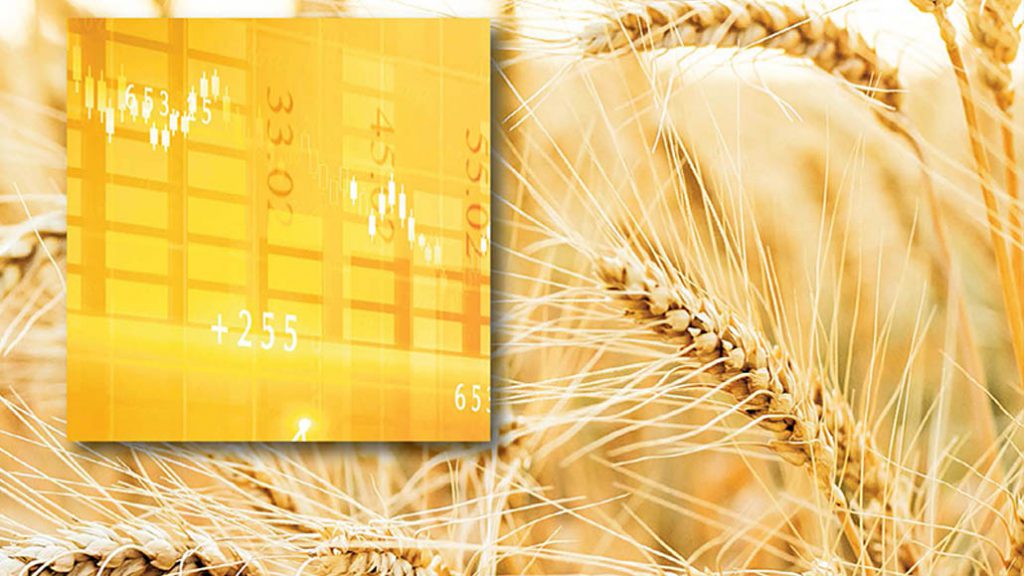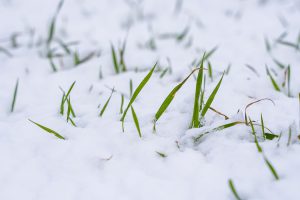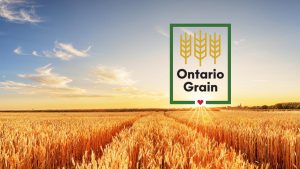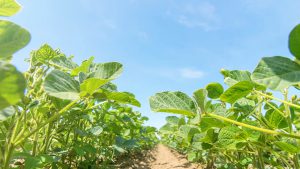A new era
USING TECHNOLOGY TO MARKET YOUR CROP

THE GOAL OF Grain Discovery’s new buy-sell app is to provide a reliable way to save time and costs and create greater transparency for farmers, buyers, and the entire grain value chain.
The app, launched in September is designed “to revolutionize the way grain is marketed and traded.”
Currently, many farmers look at their elevator’s website, where they see ‘delayed’ pricing. They then call up staff at the elevator and ask the current price — and if they like it, they sell.
With the app, buyers post live bids to farmers who can confirm deals instantly or post their own target offers. Farmer-users can view tickets, deliveries, contracts, and settlements anytime, anywhere. Messaging and alerts are also included to enhance the connection between buyers and growers.
Grain Discovery CEO Rory O’Sullivan has overseen development of the app for the last two years. He says there are advantages to using the app for both buyers and sellers.
For buyers, the app eliminates missed marketing opportunities and the tedious juggling of calls and paperwork.
“During peak times (harvest time), the merchant could spend 70 per cent of his or her day on the phone, confirming a price, writing out the contract, sending out the contract, and relaying general portfolio information (how much grain they have sold, delivered etc.),” O’Sullivan explains. “And these are all manual processes, which can sometimes lead to mistakes. Grain Discovery automates this entire process, freeing up the merchant to concentrate on high-value jobs.”
For the farmer, the app allows management of prices ‘yo-yoing’ throughout the day.
“Farmers can set price alerts and create target offers, so if market reaches X price, then a contract will be automatically executed,” O’Sullivan says. “They can see all their target offers in the platform and easily adjust/edit on the fly, while the grain merchant can easily send ‘pop up messages’ to their farmers alerting them to market activity and opportunities.”
The app launched at the start of the busy 2020 harvest and five elevators in Ontario and one in Saskatchewan were signed up by early November. Post-harvest, Grain Discovery expected to add more elevators, rolling out across North America and Australia during 2021.
LOCKIE FARMS
By early November, about 40 clients at Lockie Farms Grain Elevator in Zephyr, Ontario were using the app or the computer version. These users range in age from their 20s to their 80s.
“Farmers are calling us and asking us to walk them through it but we’re also reaching out to our clients,” explains Tiffany Spearing, general manager. “We’re getting them used to it in a few ways. We used to have a whiteboard here with updated prices that anyone dropping by could see, but we’ve replaced it with a screen where we are live-feeding the Grain Discovery client portal, so they are getting used to seeing what they would see on their computer at home. It’s arranged a bit differently on the app but it’s the same information. So, they’re getting used to seeing that. Our employees are also bringing it up and we also sent out an email.”
Spearing and her team stress the benefits of using the system, and also point out that confirming contracts digitally is the way of the future.
“After they try it and get comfortable, they are generally really happy,” Spearing says. “The ones that are using it fully are really using it, and we also have others who are using it partially at this point. This means they’re looking at the information on their computers or the app but they’re not quite comfy enough to press the sell button. So, they call me to tell me to sell, but they’re better informed than they would have been, with the most up-to-date prices.”
Some other users press the sell button but call Spearing to confirm that it’s gone through.
“And I think they also want to make that connection,” she explains. “Digital transactions will never replace our personal relationships with our clients, but a large part of the system is about having more information to maximize profits. With the platform, they can do better for their farms and also not sacrifice any connection with us. And they really like they can do it themselves, to have that knowledge directly and not have to remember all their details because they’ve been loaded into the app.”
Her clients who use the system also tell Spearing that they have a new appreciation for how much prices can change over short periods of time, and that this is prompting them to watch them more closely.
TRACEABILITY
In 2019, Grain Discovery and the Canadian Seed Growers’ Association conducted a pilot project with support from Grain Farmers of Ontario and Agriculture and Agri-Food Canada to track identity-preserved (IP) soybeans from the breeding institution (University of Guelph) to final product (tofu) for sale in Ontario stores. This project followed the world’s first corn transaction using blockchain technology, conducted by Grain Discovery in Ontario. And this year, Grain Discovery worked with Olds College in Alberta to produce a fully-traceable beer.
All of these experiences will be used to further develop the Grain Discovery app platform.
“It will have built-in end-to-end traceability solution that creates a ‘digital passport’ for commodities through the entire value chain,” says O’Sullivan. “Agriculture is undergoing an important shift away from a commodities business, where each bushel is considered identical, to an ingredients business, where consumers demand distinction. This is vital for certification and quality assurances that are core to current and future sustainability and farm-to-fork movements. The first crops we’ll target are ones that already have traceability systems in place, but would benefit from our modernisation, such as IP, malt barley, hemp, and other speciality crops.” •













